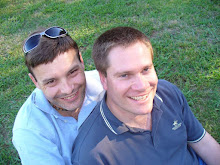We took advantage of today’s sunny weather by driving along the Hawkesbury River from Brooklyn, via Monsoon Creek, to Wisemans Ferry. Our leisurely circular route covered more than 250kms, taking in the traffic-choked Pacific Highway, the sweeping freeway curving through Kuring-gai Chase National Park and the winding, empty roads of the Northern Hawkesbury River.
We initially joined the aptly named Wisemans Ferry Road, 13kms north of Peats Ridge where a tranquil country lane follows meandering tributaries towards Monsoon Creek.The creek itself is a broad sweeping river that ultimately joins the Hawkesbury River near the small village of Spencer. It was here that we stopped for lunch, enjoying a classic Australian hamburger at the local country store. The store sits opposite a short, wooden plank jetty where we watched boats regularly coming and going, often stopping to collect their own dose fast food, or the odd case of beer.
The road then turned west and wound its way along the northern bank of the broad and somewhat majestic Hawkesbury. As we soaked in the tree-clad water views, birds could be heard calling over sound of the Saab’s purring engine. By accident we found ourselves driving up the MacDonald valley as far as St Albans.
This quaint rural settlement is best known for its nineteenth century pioneer pub, built from local sandstone. The impressive structure was originally built as a stopover for Cobb and Co. stagecoaches traveling between Sydney and Newcastle. Today it’s a popular watering hole for tourists who gather on picnic tables under the shade of towering eucalyptus gum trees. Several miles down river we stumbled across the town's original graveyard located on a quiet bend in the road.
We retraced our route back down the valley towards the Webb Creek ferry, where a five-minute crossing saw us deposited safely on the Hawkesbury’s southern bank. From here the road climbs abruptly to a scenic outlook over the river valley. We stopped briefly to admire the lush green scene before continuing back to Sydney and the bustle of urban life.
Our day finished on another high note when I received a response to an ad I'd placed online this morning. Last week we ended up with a spare ticket to the New Years Eve fireworks at the Opera House. Our English friend Martin had planned to fly in from London to join us until his mother was unexpected hospitalized. However, we've been able to off-load our spare ticket at roughly half its face value. This was my first attempt at online selling so it was a pleasant surprise to discover how swiftly and effortlessly the transaction occurred.





































































